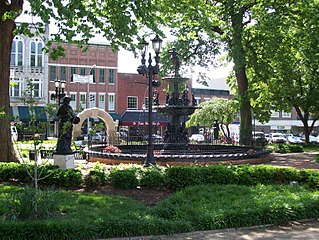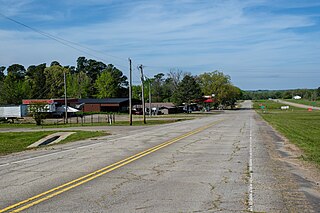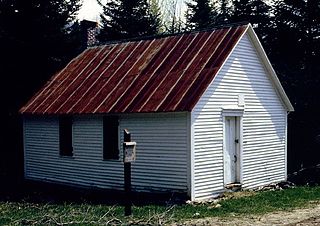
Wolfe County is a county located in the U.S. state of Kentucky. As of the 2020 census, the population was 6,562. Its county seat is Campton. The county is named for Nathaniel Wolfe, one of the first two graduates of the University of Virginia School of Laws in 1829 and a loyal Unionist attorney for Jefferson County, Kentucky.

Scott County is a county located in the central part of the U.S. state of Kentucky. As of the 2020 census, the population was 57,155. Scott County is part of the Lexington-Fayette, Kentucky Metropolitan Statistical Area. Its county seat and largest city is Georgetown.

Bowling Green is a city and the county seat of Warren County, Kentucky, United States. Its population was 72,294 as of the 2020 census, making it the third-most populous city in the state, after Louisville and Lexington. The Bowling Green metropolitan area is the fourth-largest in the state and had a population of 179,639 in 2020.

Dwight Presbyterian Mission was one of the first American missions to the Native Americans. It was established near present-day Russellville, Arkansas in 1820 to serve the Arkansas Cherokees. After the Cherokee were required to move to Indian Territory in 1828, the mission was reestablished in 1829 near present-day Marble City, Oklahoma. The mission is listed on the National Register of Historic Places.

The Salinas Pueblo Missions National Monument is a complex of three Spanish missions located in the U.S. state of New Mexico, near Mountainair. The main park visitor center is in Mountainair. Construction of the missions began in 1622 and was completed in 1635.

Eagletown is an unincorporated community and census-designated place in McCurtain County, Oklahoma, United States. The population was 528 at the 2010 census. Located on Mountain Fork River, approximately 6 miles (9.7 km) from the Oklahoma-Arkansas border, it was the first permanent Choctaw settlement in the Indian Territory, who called it o̱ssi tamaha ("Eagle"). Eagletown was an important town from 1834 to 1906, and after 1850, served as county seat for the Choctaw Nation's Eagle County. The town name was officially changed to "Eagle Town" in 1850, then changed to the present Eagletown in 1892. When Indian Territory was preparing to unite with Oklahoma Territory to form the new state of Oklahoma in 1906, Eagletown lost its county seat status and became just another unincorporated community in the new McCurtain County.

The Frontier Nursing Service (FNS) provides healthcare services to rural, underserved populations since 1925, and educates nurse-midwives since 1939.
Chahta Tamaha served as the capital of the Choctaw Nation from 1863 to 1883 in Indian Territory. The town developed initially around the Armstrong Academy, which was operated by Protestant religious missionaries from 1844 to 1861 to serve Choctaw boys. After the capital was relocated to another town, this community declined.

Bangor Theological Seminary was an ecumenical seminary, founded in 1814, in the Congregational tradition of the United Church of Christ. Located in Bangor, Maine, and Portland, Maine, it was the only accredited graduate school of religion in Northern New England

Beaver Meadows Visitor Center, also known as Rocky Mountain National Park Administration Building, is the park headquarters and principal visitors center of Rocky Mountain National Park in central northern Colorado. Completed in 1967, it was designed by Taliesin Associated Architects, and was one of the most significant commissions for that firm in the years immediately following the death of founder Frank Lloyd Wright. It was also one of the last major projects completed under the Park Service Mission 66 project. It was declared a National Historic Landmark in 2001.
Wheelock Academy was the model academy for the Five Civilized Tribes' academies. It was started as a missionary school for Choctaw girls, and is still owned by the Choctaw nation. The school closed in 1955 and the only remaining Choctaw school, Jones Academy, became coeducational. The site is located 3 miles (4.8 km) east of Millerton in McCurtain County, Oklahoma. It is administered by the Bureau of Indian Affairs.
Settlement schools are social reform institutions established in rural Appalachia in the early 20th century with the purpose of educating mountain children and improving their isolated rural communities.

The Downtown Greensburg Historic District in Greensburg, Kentucky, the county seat of Green County, is a historic district on the National Register of Historic Places. It consists of 47 contributing properties.

The Waiākea Mission Station was the first Christian mission on the eastern side of the Island of Hawaiʻi. Also known as the Hilo Station, the latest structure is now called Haili Church.

The Waiʻoli Mission District at Hanalei Bay, on Route 560 along the north shore of the island of Kauaʻi, is the site of a historic mission. The first permanent missionaries to the area arrived in 1834, and the district was added to the National Register of Historic Places in 1973.
Wheelock Church is a historic church building in Millerton, McCurtain County, Oklahoma. Built in 1845-6, the existing stone structure is the oldest surviving church building in the state of Oklahoma and the oldest church congregation in the Choctaw Nation. The building was added to the National Register of Historic Places in 1972.

The Brainerd Mission was a Christian mission to the Cherokee in present-day Chattanooga, Tennessee. The associated Brainerd Mission Cemetery is the only part that remains, and is listed on the National Register of Historic Places.

Scarritt College for Christian Workers was a college associated with the United Methodist Church in Nashville, Tennessee, USA. The campus is now home to Scarritt Bennett Center.

The District No. 1 Schoolhouse is a historic one-room schoolhouse on Somerset Road in Somerset, Vermont, United States. Built about 1850, it is the only known entirely unaltered district schoolhouse in the state, and is probably the only surviving municipal building from the tiny community, which was disincorporated in 1937. The building was listed on the National Register of Historic Places in 1992.

Belle Harris Bennett led the struggle for and won laity rights for women in the Methodist Episcopal Church, South. She was the founding president of the Woman's Missionary Council of the Southern Methodist Church. Much of her work including fundraising and organizational efforts to provide higher education for a new professional class of social workers and community organizers in the Southern Methodist Church in the U.S. and abroad. Her carefully collaborative support for African Americans and immigrants was considered radical at that time by Southerners. She was a suffragist and supporter of temperance as well.

















